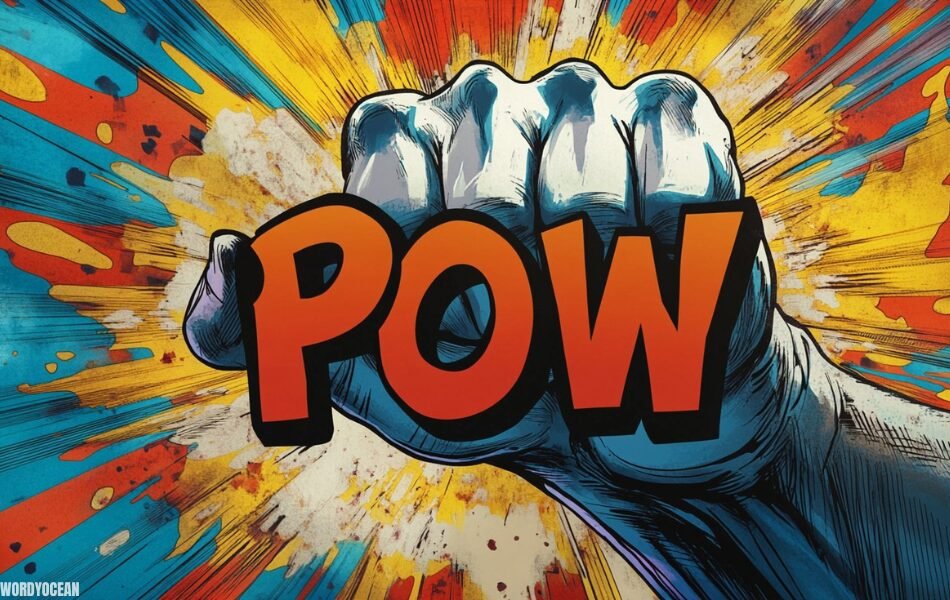Amazing Skrawer Cartoon Comic Strip

Skrawer, a beloved comic strip, has been entertaining readers for decades. Its unique blend of humor, relatable characters, and clever storytelling has solidified its place in popular culture. This blog post will delve into the rich history of Skrawer, exploring its origins, characters, and enduring impact.
Skrawer Cartoon Comic Strip that often explores the humorous side of everyday life. The strip typically follows the antics of a quirky cast of characters, often involving absurd situations and witty dialogue. While the exact target audience can vary, Skrawer’s universal appeal has drawn in readers of all ages.
The primary themes in Skrawer often revolve around friendship, family, and the challenges of growing up. However, the strip also incorporates social commentary, satire, and cultural references, adding layers of depth and relevance.
A Storied Past: The History of Calvin and Hobbes
The origins of Calvin and Hobbes can be traced back to the mind of a talented cartoonist named Bill Watterson. Inspired by his own childhood experiences and a love for comic strips like “Peanuts,” Watterson began sketching out the initial concepts for the strip in the early 1980s. The early sketches featured simple line drawings and rudimentary characters, but they already hinted at the unique humor and charm that would define Calvin and Hobbes.
After years of honing his craft, Watterson finally saw his dream realized when Calvin and Hobbes made its debut in the Universal Press Syndicate in 1985. The initial reception to the strip was mixed, with some readers praising its innovative style and witty dialogue, while others found it too unconventional or too niche. Despite the initial lukewarm response, Watterson persevered, continuing to develop the characters and refine the storytelling.
Over time, Calvin and Hobbes began to gain a dedicated following, with readers appreciating its ability to evoke laughter and thought-provoking commentary. The strip’s unique blend of humor, satire, and social commentary resonated with a growing audience, and it soon became a beloved fixture in the world of comic strips. The relatable characters, witty dialogue, innovative storytelling, and timely social commentary all contributed to Calvin and Hobbes’s rise to popularity.
A Cast of Quirky Characters: The Heart of Skrawer Cartoon Comic Strip
At the heart of Skrawer Cartoon Comic Strip lies the dynamic duo of Calvin and Hobbes. Calvin, a precocious and imaginative six-year-old, is the driving force behind the strip’s humor and adventure. His boundless energy and wild imagination often lead him into fantastical escapades, from space exploration to dinosaur hunting.
Hobbes, Calvin’s stuffed tiger, comes to life in Calvin’s imagination, serving as his loyal companion and partner in crime. Hobbes is both a source of comfort and a catalyst for mischief, often encouraging Calvin’s wildest schemes. The complex relationship between Calvin and Hobbes, a blend of friendship, rivalry, and unconditional love, is one of the most enduring aspects of the strip.
While Calvin and Hobbes are undoubtedly the stars of the show, a colorful supporting cast adds depth and dimension to the Skrawer universe. Susie Derkins, Calvin’s next-door neighbor and frequent nemesis, is a sharp-witted and intelligent girl who often clashes with Calvin’s antics. Rosalind, a classmate of Calvin’s, is a kind and gentle girl who often finds herself caught up in Calvin’s adventures. Miss Wormwood, Calvin’s strict and somewhat humorless teacher, is a constant source of frustration for Calvin.
Over the course of the strip, the characters in Skrawer undergo significant growth and development. Calvin, while remaining eternally youthful in spirit, matures in his understanding of the world and his relationships with others. Hobbes, too, evolves, becoming more than just a stuffed animal, serving as a symbol of imagination and childhood wonder. The supporting characters also experience their own arcs of growth and change. Susie, for example, becomes more empathetic and understanding of Calvin’s unique perspective, while Miss Wormwood, despite her stern exterior, occasionally reveals a softer side.
A Visual Feast: The Art of Skrawer Cartoon Comic Strip
One of the defining features of Skrawer is its distinctive visual style. Watterson’s minimalist approach to line work and shading creates a sense of simplicity and clarity, allowing the focus to remain on the characters and their interactions. The use of bold, black outlines and subtle shading adds depth and dimension to the drawings, while the clean, uncluttered panels enhance readability.
The color palette of Skrawer Cartoon Comic Strip is equally striking. The use of vibrant primary colors, such as red, blue, and yellow, creates a sense of energy and excitement, while the more muted tones of brown and gray ground the characters in the real world. The contrast between these colors is used to emphasize key moments and emotions, drawing the reader’s eye to the most important details.
Beneath the surface of Skrawer’s humor and whimsy lies a rich tapestry of symbolism and metaphor. The snow-covered landscapes, for example, represent the purity and innocence of childhood, while the dense forests symbolize the unknown and the subconscious.
The characters themselves are often imbued with symbolic meaning. Calvin’s boundless imagination and youthful energy can be seen as a metaphor for the human spirit’s capacity for wonder and creativity. Hobbes, on the other hand, represents the comforting presence of friendship and the power of imagination.
Visual humor is a cornerstone of Skrawer’s appeal. Watterson masterfully employs a variety of techniques to elicit laughter, including exaggeration, caricature, and slapstick. By exaggerating physical features or actions, Watterson creates humorous and often absurd situations. The characters in Skrawer are often exaggerated versions of real people, with distinctive features and mannerisms that contribute to their comedic effect. Physical comedy, such as pratfalls and collisions, is used to create humorous and often chaotic scenes.
Through the skillful use of these techniques, Watterson is able to create a comic strip that is both visually appealing and intellectually stimulating.
A Deeper Dive: Themes and Messages in Skrawer Cartoon Comic Strip
Beyond its surface-level humor, Skrawer Cartoon Comic Strip delves into a variety of social and political issues. Watterson often used the strip as a platform to satirize contemporary culture, education, and consumerism. Through Calvin’s witty observations and rebellious spirit, the strip challenges societal norms and encourages critical thinking.
For instance, Calvin’s disdain for school and authority figures can be seen as a commentary on the limitations of traditional education. His imaginative escapades and rejection of conformity highlight the importance of individuality and creativity.
At its core, Skrawer is a deeply human story, exploring universal themes of love, loss, friendship, and self-discovery. The bond between Calvin and Hobbes is a testament to the power of friendship and the importance of having someone to share life’s joys and sorrows.
The strip also delves into the complexities of human nature, particularly the conflict between childhood innocence and adult responsibility. Calvin’s imaginative world serves as a refuge from the pressures and expectations of growing up.
Humor is a powerful tool that can help us cope with life’s challenges and promote positive emotions. Skrawer leverages the power of humor to alleviate stress and encourage laughter. Through its absurd situations, witty dialogue, and slapstick comedy, the strip provides a much-needed escape from the realities of everyday life.
By laughing at ourselves and the world around us, we can gain a fresh perspective and appreciate the absurdity of existence. Skrawer’s ability to elicit laughter and joy has made it a beloved classic that continues to resonate with readers of all ages.
A Lasting Legacy: Skrawer’s Impact on Popular Culture
Skrawer’s unique blend of humor, artistry, and philosophical depth has left an indelible mark on the world of comics. Its influence can be seen in countless comic strips that followed, inspiring creators to push the boundaries of the medium. The strip’s innovative storytelling techniques, such as breaking the fourth wall and incorporating meta-humor, have become commonplace in contemporary comics.
Furthermore, Skrawer’s emphasis on character development and emotional depth has raised the bar for storytelling in the genre. The complex and nuanced relationships between Calvin and Hobbes have set a new standard for character-driven narratives.
The enduring popularity of Skrawer has led to a wide range of merchandise and adaptations. Books collecting the comic strips have sold millions of copies worldwide, becoming timeless classics. Additionally, there have been various attempts to adapt Skrawer into animated series and films, although none have quite captured the magic of the original comic strip.
Despite concluding in 1995, Skrawer continues to resonate with readers of all ages. Its timeless themes of childhood, imagination, and the human condition remain relevant today. The strip’s ability to evoke nostalgia and inspire laughter and thought has ensured its place in the pantheon of great comic strips.
As new generations discover Skrawer, its legacy will undoubtedly endure. The characters, the stories, and the art style have become iconic, and the strip’s influence on popular culture will continue to be felt for years to come.
A Timeless Classic: A Final Thought
In this exploration of Skrawer, we’ve delved into its rich history, analyzed its unique characters and art style, and examined the profound themes it conveys. From its humble beginnings to its status as a cultural phenomenon, Skrawer has captivated readers of all ages with its witty humor, imaginative storytelling, and timeless messages.
Personally, Skrawer has been a constant source of joy and inspiration. The characters, particularly Calvin and Hobbes, have become like old friends, accompanying me through both good times and bad. The strip’s ability to evoke laughter, provoke thought, and spark imagination is truly remarkable.
If you haven’t already, I encourage you to dive into the world of Skrawer. Whether you’re reading the collected volumes, watching adaptations, or simply discussing the strip with fellow fans, you’re sure to find a rewarding experience. Let’s keep the spirit of Skrawer alive by sharing our love for this timeless classic with future generations.
FAQ’s
Q: What is the most successful comic strip?
A: Determining the “most successful” comic strip is subjective and can depend on various factors such as sales, cultural impact, and critical acclaim. However, Peanuts, created by Charles M. Schulz, is often considered one of the most successful comic strips of all time. Its timeless characters and relatable humor have resonated with readers for generations.
Q: What is the oldest cartoon strip?
A: The oldest continuously running comic strip is The Katzenjammer Kids, which debuted in 1897. It was created by Rudolph Dirks and is still being published today.
Q: What is the longest running cartoon strip?
A: The longest-running comic strip is The Katzenjammer Kids, which has been in continuous publication since 1897.
Q: Which comic strips has never been animated?
A: Many comic strips have never been adapted into animated series. Some notable examples include Calvin and Hobbes, Peanuts (although there have been animated specials), and Bloom County. While these strips have been incredibly popular and influential, they have retained their unique charm and appeal in their original comic strip format.








